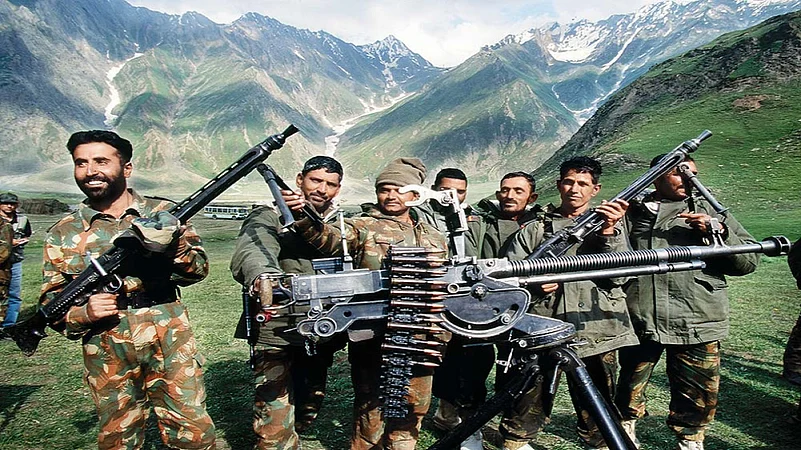Sitting in the backdrop of Tiger Hill, actor Siddharth Malhotra, who plays Captain Vikram Batra in Shershaah, talks to Outlook’s Lachmi Deb Roy on its being the first Bollywood film to be shot in Kargil. He mentions the challenges faced by him when shooting in the difficult terrain and how the film changed him as a person. Excerpts from an interview:
How was your Kargil experience?
Kargil has a very distinct feel as compared to the rest of the country, especially the weather. You still get the feel of a battlefield where we lost Capt Vikram Batra. It is a difficult terrain to shoot in. Shershaah was the first Hindi film to be shot in Kargil. Shooting at 12,000 feet and 14,000 feet is tough, where there is less oxygen and sparse vegetation. There are rocks everywhere, and the danger of rocks falling on you is constant. As a team, whether the cameraperson or the actors, to cope with those 45 days of wind, dust, accelerating heart rates and bruises was a difficult task. I remember I got into a bike accident—I fell off the bike at a speed of 60 kms and was literally battered. Luckily, I had my helmet on. Next day, I was back on the set after taking painkillers.
Help from the Indian Army
This film wouldn’t have been possible without the help of the Indian Army. The army was very supportive of the fact that a film was being made on Capt Batra, who died a hero’s death. We have actual army personnel in the film, whom you will see in the background. It’s a film about them and for them. We are very grateful to them for allowing us to shoot in such a sensitive area.
How was it playing Capt Vikram Batra?
My preparation began as soon as I met the family of Capt Batra—a good-natured Punjabi boy who loved Hindi movies. I spoke to his family members, colleagues and friends so as to get to know the person he was. Full credit to script-writer Sandeep Srivastava, who did a lot of research. All of Capt Batra’s friends, seniors and subordinates spoke about his focus as a leader. His famous exultation after winning the Tiger Hill battle, ‘Yeh dil maange more sir’, shows the amazing person he was. We tried to be as true to that character.

Siddharth Malhotra
I had to also undergo strenuous physical training as well as gun training. I had to learn army etiquettes. The moment you wear the Indian Army uniform your body language and your persona changes. To get into the headspace of a real war hero was an amazing experience. I hope Capt Batra’s family is happy when it sees the way we have portrayed him.
How much cinematic liberty was taken?
The film doesn’t have a linear narration, for you cannot show an entire life in two hours. We have concentrated on why Capt Batra is called Shershaah. The film has parts of his family life and love life, but we mainly wanted the audience to know the war hero.
How was shooting in a conflict zone?
It was overwhelming to see the terrain where our soldiers fought. It sometimes has an eerie feel, to think that a war was fought here. So, as scenic as it is, there is an element of heaviness in your heart.
How did the film change you as a person?
Just getting into the headspace, and shoes, of a soldier in a battlefield atop a mountain makes me respect our soldiers. My grandfather was in the army and fought in the India-China war. So I had great respect for the armed forces.
What scene was the most challenging to shoot?
The last scene, of Capt Batra on the battlefield. It is difficult to recreate real-life incidents where the protagonist has sacrificed his life for the country. To make it convincing, a lot of effort went into it.
(The 22nd anniversary of the Kargil War was celebrated in July 26)
















